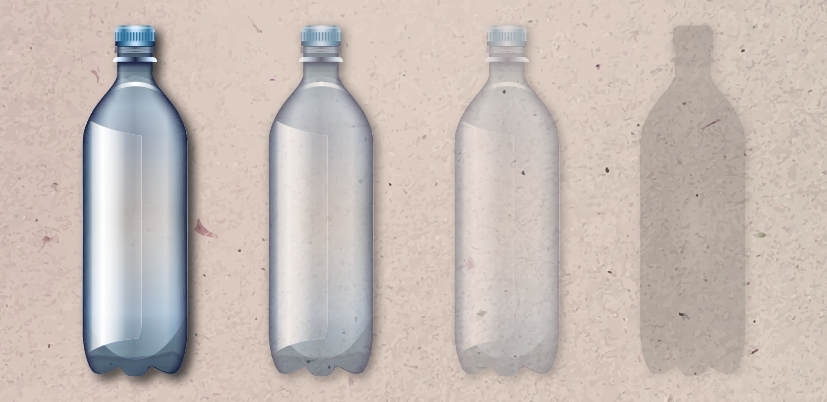

A bacterium found in the Santos Estuarine System off the coast of São Paulo State, Brazil, produces a biopolymer that has yet to be characterized (image: RCGI)
A bacterium found in the Santos Estuarine System off the coast of São Paulo State, Brazil, produces a biopolymer that has yet to be characterized.
A bacterium found in the Santos Estuarine System off the coast of São Paulo State, Brazil, produces a biopolymer that has yet to be characterized.

A bacterium found in the Santos Estuarine System off the coast of São Paulo State, Brazil, produces a biopolymer that has yet to be characterized (image: RCGI)
By Elton Alisson | Agência FAPESP – The turbid and polluted waters of the Santos Estuarine System off the coast of São Paulo State in Brazil may offer a means for the sustainable production of a high value-added plastic.
Researchers affiliated with the University of São Paulo’s Environmental Training & Research Center (CEPEMA-USP) have isolated a bacterium from the southern coast of the state that produces biopolymer, a polymer formed from a biotechnological process.
The discovery emerged during a project conducted under the aegis of the Research Centre for Gas Innovation, supported by FAPESP and Shell through FAPESP’s University-Industry Cooperative Research (PITE).
“We haven’t yet characterized the polymer produced by the bacterium, but our analysis indicates that it’s quite different from any described in the scientific literature,” said Elen Aquino Perpétuo, a professor in the Marine Science Department (DCMar) of the Federal University of São Paulo (UNIFESP) and principal investigator for the project, in an interview with Agência FAPESP.
About a year ago, Aquino and two colleagues – Bruno Karolski, another researcher at CEPEMA-USP, and PhD student Letícia Cardoso – began working on a project to develop biotechnological processes using microorganisms to mitigate methane (CH4) and carbon dioxide (CO2) emissions, both of which are present in natural gas.
First, they searched for methanotrophic bacteria, which consume and metabolize methane and methanol and convert these chemicals into polymers, such as polyhydroxybutyrate (PHB), a type of polyhydroxyalkanoate (PHA), with physical and mechanical properties similar to those of synthetic resins like polypropylene.
Developed with the support of FAPESP, PHB is produced in Brazil by a locally owned company in Serrana, São Paulo State. The substrate is sugarcane, which costs 30% more than methane.
“The purpose of our research is to use a cheaper substrate than sugar – in this case methane and methanol – to produce PHB and make its production by a biological route commercially feasible,” Aquino said.
While bioprospecting, they collected samples at three different locations in the Santos Estuarine System and discovered two bacteria capable of converting methane into biopolymers: Methylobacterium extorquens, which produces PHB, and Methylobacterium rhodesianum, which converts methane into a polymer that has not yet been characterized.
“There have never been any other reports that M. rhodesianum accumulates a polymer,” Aquino said.
Increased output
The researchers also found that these bacteria, isolated from natural systems, produce more polymer than do laboratory-grown commercial strains, such as Methylobacter sp. and Methylocystis sp., which were used during the early stages of the project to validate the methodology.
Without controlling for temperature, pH, agitation and other parameters, M. extorquens, isolated from the marine environment accumulates polymer in quantities up to 30% of its dry weight.
“This difference in polymer production is due to the pressure on these bacteria in nature, where they’re exposed to adverse conditions in terms of temperature, salinity, tides and pollutants, so they have to be more resistant than lab-grown strains,” Aquina said. “They also need larger reserves of energy to survive.”
Methanotrophic microorganisms produce biopolymer in response to a surplus of carbon and a scarcity of some nutrients, she explained. Under such conditions, the bacteria store carbon in polyhydroxyalkanoate granules as an energy reserve.
“Initially these reserve granules were thought to be lipid oils. Later, it was discovered that they actually belong to the polyhydroxyalkanoate group and can be used to produce biodegradable biopolymers, among other advantages compared to polymers derived from petrochemicals,” she said.
Because these microorganisms need methane as a substrate for biopolymer production, the researchers chose gas-abundant locations for bioprospecting.
Their first choice was the Balbina hydroelectric dam reservoir in Amazonas State, which is in the northern region of Brazil. The second was the Santos Estuarine System, which was selected for comparison.
According to Aquino, however, samples collected in the Santos Estuarine System proved more interesting than the samples from Balbina.
“We were able to isolate many microorganisms in Santos, so we started working with them and postponed processing of the samples collected in Balbina,” she said. “But we plan to resume analysis of the samples from Balbina in the coming weeks as they contain a great many different microorganisms.”
Commercial feasibility
In addition to characterizing the polymer produced by M. rhodesianum, the researchers are working to estimate the commercial feasibility of biopolymer production.
For the biological route to be economically viable, the bacterium must be capable of accumulating 60% of its dry weight as polymer. According to Aquino, this proportion is based on the production of PHB from sugar.
“Our priority going forward will be to determine whether it’s best to invest in producing the uncharacterized biopolymer or increasing the PHB yield, as PHB is well-known commercially and already has an established market,” she said.
Republish
The Agency FAPESP licenses news via Creative Commons (CC-BY-NC-ND) so that they can be republished free of charge and in a simple way by other digital or printed vehicles. Agência FAPESP must be credited as the source of the content being republished and the name of the reporter (if any) must be attributed. Using the HMTL button below allows compliance with these rules, detailed in Digital Republishing Policy FAPESP.




